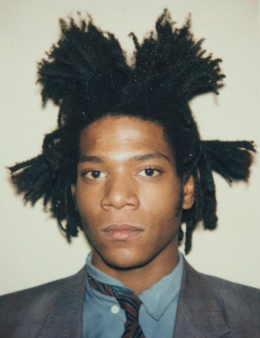
Jean-Michel Basquiat was an American artist who rose to success during the 1980s as part of the Neo-expressionism movement.

The Museum of Modern Art (MoMA) is an art museum located in Midtown Manhattan, New York City, on 53rd Street between Fifth and Sixth Avenues. The institution was conceived in 1929 by Abby Aldrich Rockefeller, Lillie P. Bliss, and Mary Quinn Sullivan. Initially located in the Heckscher Building on Fifth Avenue, it opened just days after the Wall Street Crash. The museum, America's first devoted exclusively to modern art, was led by A. Conger Goodyear as president and Abby Rockefeller as treasurer, with Alfred H. Barr Jr. as its first director. Under Barr's leadership, the museum's collection rapidly expanded, beginning with an inaugural exhibition of works by European modernists. Despite financial challenges, including opposition from John D. Rockefeller Jr., the museum moved to several temporary locations in its early years, and John D. Rockefeller Jr. eventually donated the land for its permanent site.
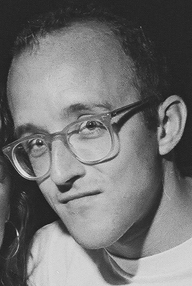
Keith Allen Haring was an American artist whose pop art emerged from the New York City graffiti subculture of the 1980s. His animated imagery has "become a widely recognized visual language". Much of his work includes sexual allusions that turned into social activism by using the images to advocate for safe sex and AIDS awareness. In addition to solo gallery exhibitions, he participated in renowned national and international group shows such as documenta in Kassel, the Whitney Biennial in New York, the São Paulo Biennial, and the Venice Biennale. The Whitney Museum held a retrospective of his art in 1997.
William Eggleston is an American photographer. He is widely credited with increasing recognition of color photography as a legitimate artistic medium. Eggleston's books include William Eggleston's Guide (1976) and The Democratic Forest (1989).

Catherine Sue Opie is an American fine art photographer and educator. She lives and works in Los Angeles, as a professor of photography at the University of California, Los Angeles.
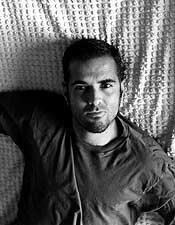
Félix González-Torres or Felix Gonzalez-Torres was a Cuban-born American visual artist. He lived and worked primarily in New York City between 1979 and 1995 after attending university in Puerto Rico. González-Torres’s practice incorporates a minimalist visual vocabulary and certain artworks that are composed of everyday materials such as strings of light bulbs, paired wall clocks, stacks of paper, and individually wrapped candies. González-Torres is known for having made significant contributions to the field of conceptual art in the 1980s and 1990s. His practice continues to influence and be influenced by present-day cultural discourses. González-Torres died in Miami in 1996 from AIDS-related illness.

Vija Celmins is a Latvian American visual artist best known for photo-realistic paintings and drawings of natural environments and phenomena such as the ocean, spider webs, star fields, and rocks. Her earlier work included pop sculptures and monochromatic representational paintings. Based in New York City, she has been the subject of over forty solo exhibitions since 1965, and major retrospectives at the Museum of Modern Art, Whitney Museum of American Art, Los Angeles County Museum of Art, San Francisco Museum of Modern Art, Institute of Contemporary Arts, London and the Centre Pompidou, Paris.
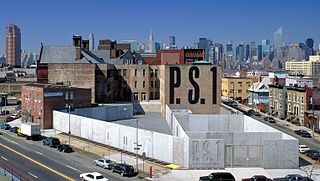
MoMA PS1 is a contemporary art institution at 22-01 Jackson Avenue in the Long Island City neighborhood of Queens in New York City, United States. In addition to its exhibitions, the institution organizes the Sunday Sessions performance series, the Warm Up summer music series, and the Young Architects Program with the Museum of Modern Art. MoMA PS1 has been affiliated with the Museum of Modern Art since January 2000 and, as of 2013, attracts about 200,000 visitors a year.

Robert Gober is an American sculptor. His work is often related to domestic and familiar objects such as sinks, doors, and legs.
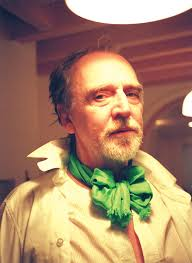
Rene Ricard was an American poet, actor, art critic, and painter.
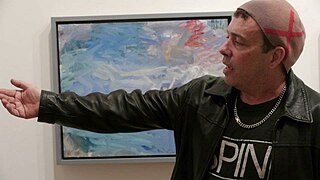
Frank Holliday is an American painter who became known in the New York City art world in the 1970s and 1980s. He is often associated with the East Village scene and associated with Club 57. His early career as an artist included working with Andy Warhol and close associations with artists such as Keith Haring Ann Magnuson and Kenny Scharf.

Lorna Simpson is an American photographer and multimedia artist whose works have been exhibited both nationally and internationally. In 1990, she became one of the first African-American woman to exhibit at the Venice Biennale. She came to prominence in the 1980s and 1990s with photo-text installations such as Guarded Conditions and Square Deal that questioned the nature of identity, gender, race, history and representation. Simpson continues to explore these themes in relation to memory and history using photography, film, video, painting, drawing, audio, and sculpture.
Rirkrit Tiravanija is a Thai contemporary artist residing in New York City, Berlin, and Chiangmai, Thailand. He was born in Buenos Aires, Argentina in 1961. His installations often take the form of stages or rooms for sharing meals, cooking, reading or playing music; architecture or structures for living and socializing are a core element in his work.

Glenn David Lowry is an American art historian and director of the Museum of Modern Art (MoMA) in New York City since 1995. His initiatives there include strengthening MoMA's contemporary art program, significantly developing the collection holdings in all media, and guiding two major campaigns for the renovation, expansion, and endowment of the museum. He has lectured and written extensively in support of contemporary art and artists and the role of museums in society, among other topics.
The United States has signed the United Nations Convention on the Rights of the Child (UNCRC); however, it remains the only United Nations member state to have not ratified it after Somalia ratified it in 2015.

Richard John Spare is a British artist and Master Printmaker known primarily for his drypoints, etchings and oil paintings. He is based in London.

The Blue Guitar is a suite of twenty etchings with aquatint by David Hockney, drawn in 1976–77 and published in 1977 in London and New York by Petersburg Press.

Tower is a mural by American artist Keith Haring executed in 1987. The mural covers the exterior of a preserved stairwell from the now demolished building of the Necker-Enfants Malades Hospital in Paris, France. It is one of two public murals in France by the artist.
The Valley is a suite of etchings by Keith Haring, illustrating the eponymous final chapter from The Western Lands by William S. Burroughs, drawn in 1989 and published in 1990. It is an ominous allegorical depiction of the horror and chaos of the AIDS Crisis.















